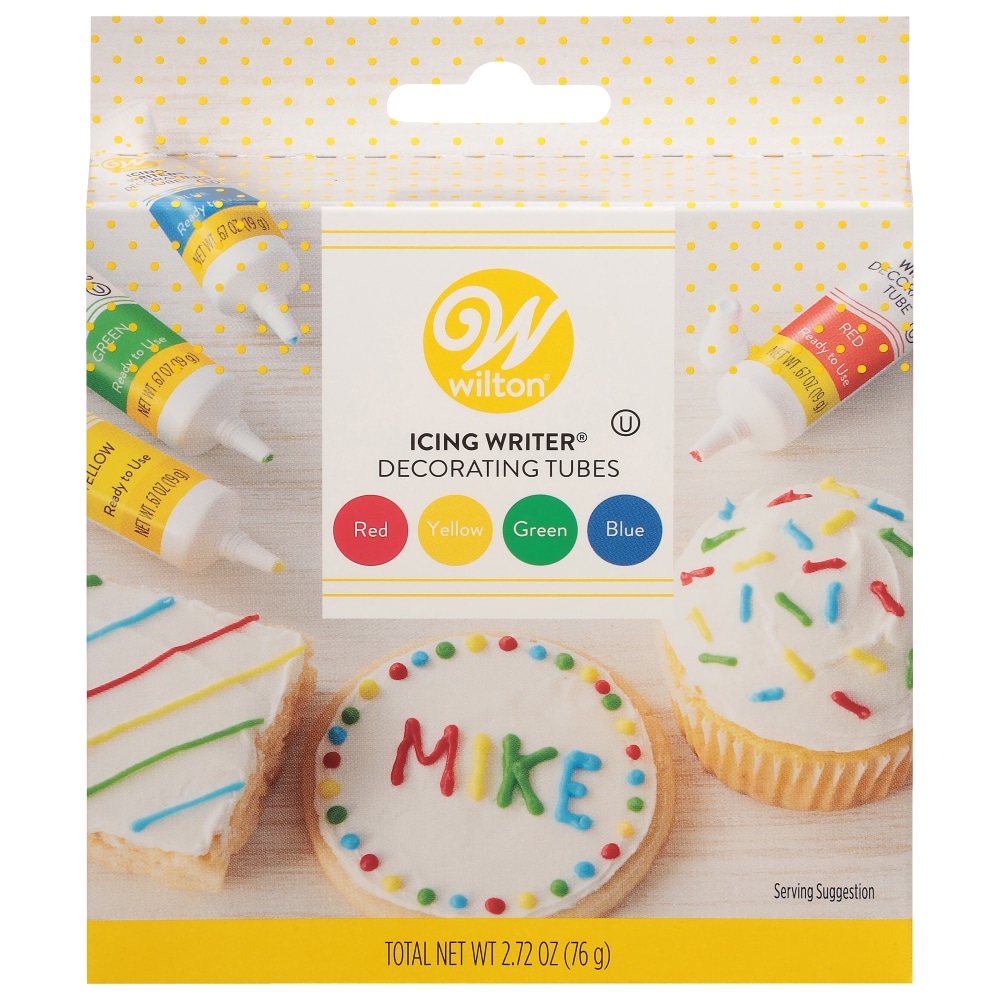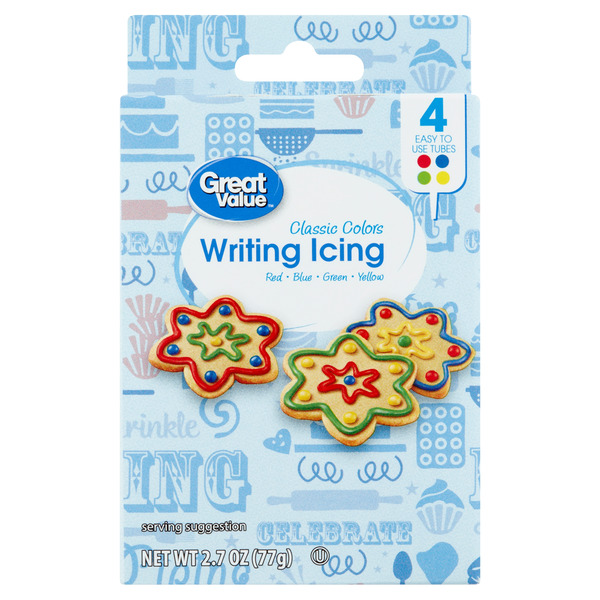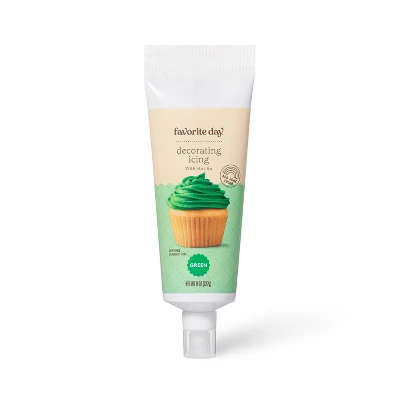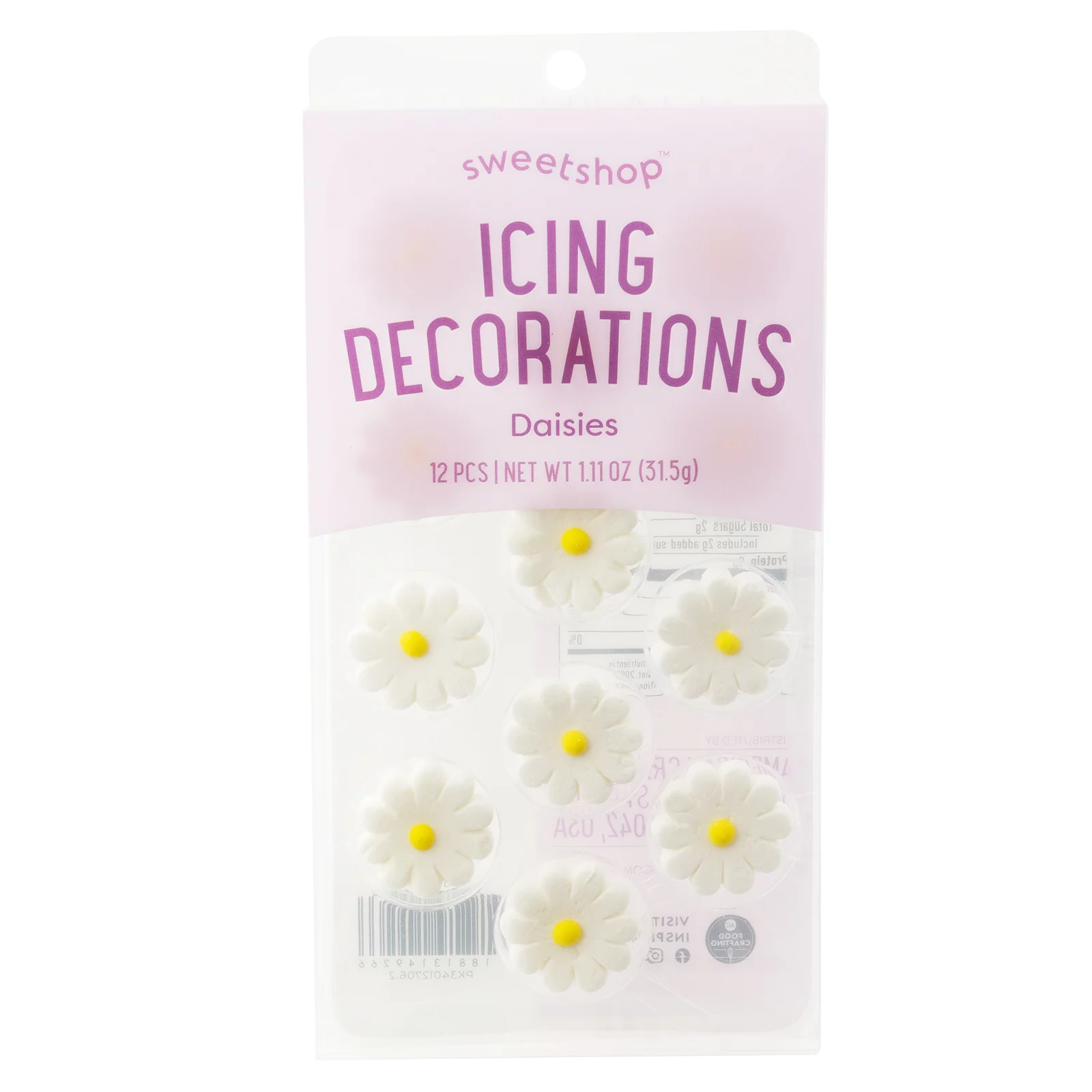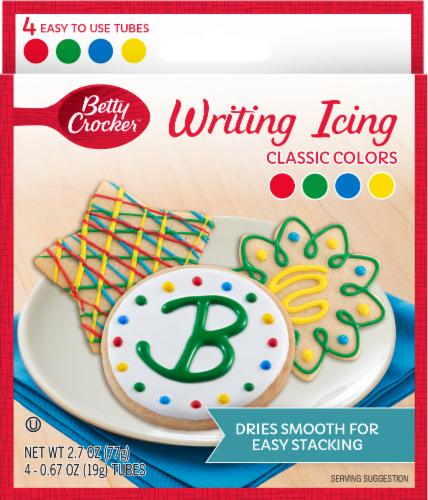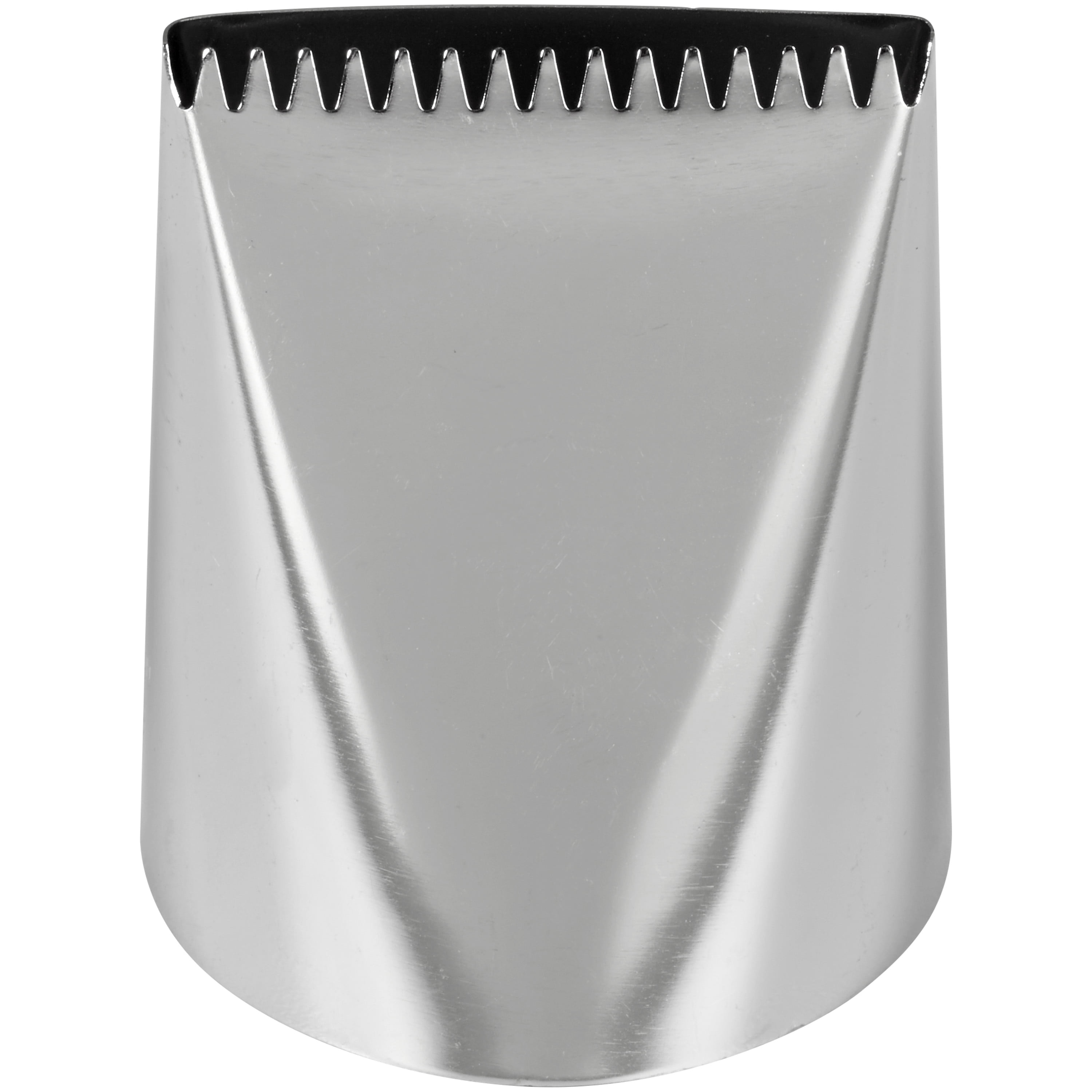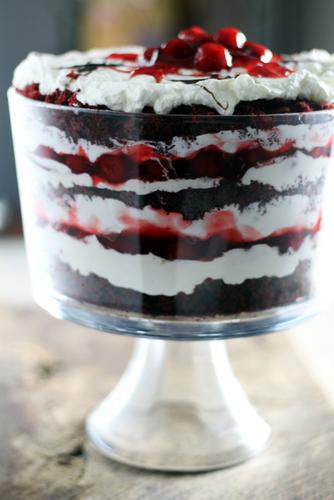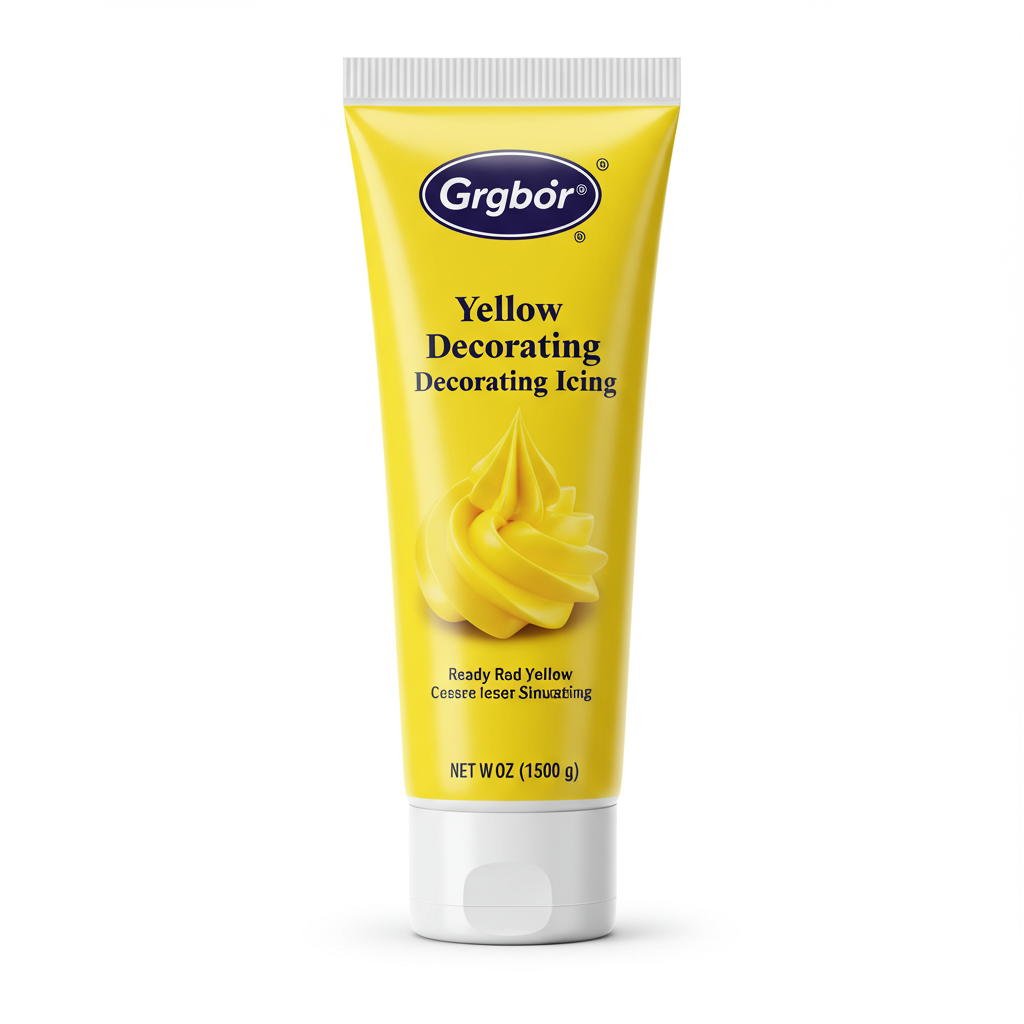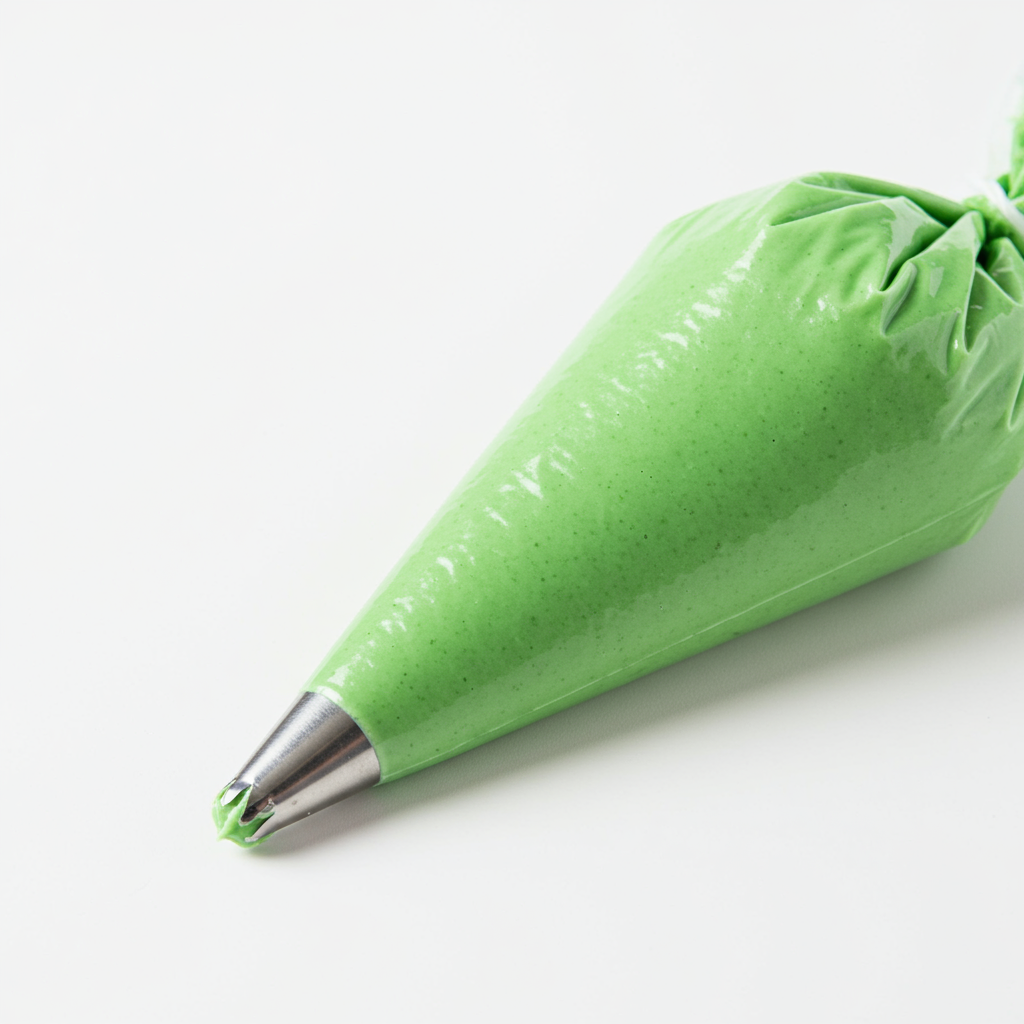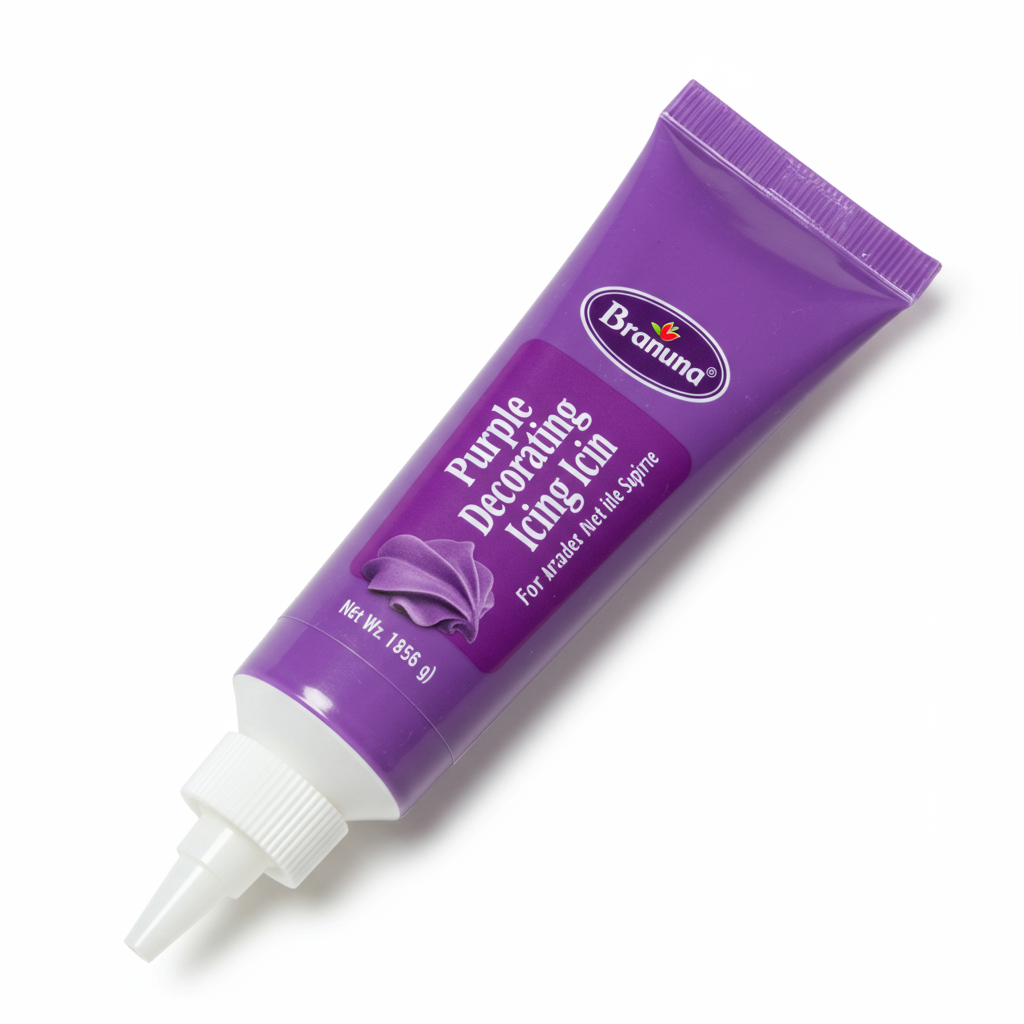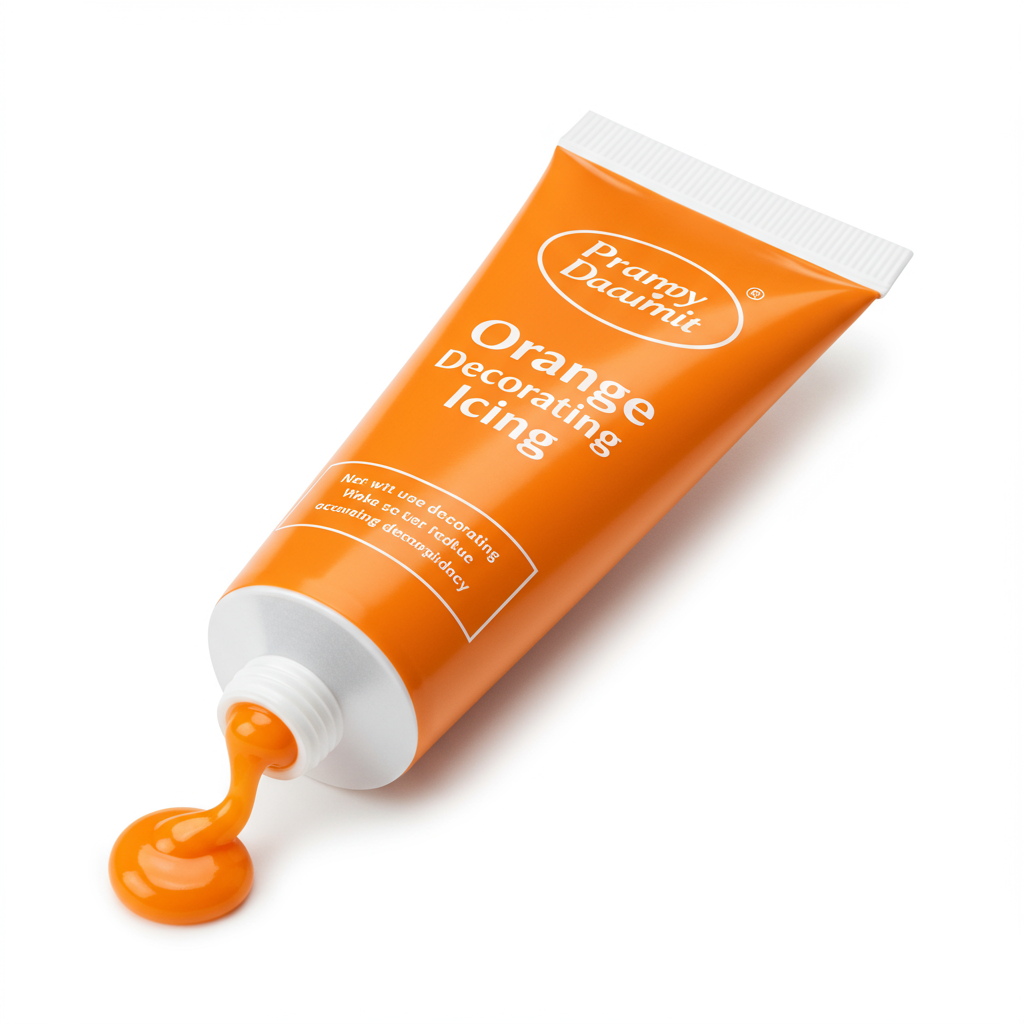DESSERTS
Decorating Icing
Decorating icing, also commonly known as frosting, is a sweet, creamy or fluffy mixture often used as a decorative and flavorful addition to cakes, cookies, cupcakes, and other baked goods. Typically made from sugar, butter, milk, and flavoring agents, there are various types of icing, such as buttercream, royal icing, fondant, and cream cheese icing, each with its unique taste, texture, and purpose in baking.
For home cooks and baking enthusiasts, decorating icing not only plays a significant role in enhancing the overall appearance of the baked treats but also adds a layer of delectable taste and mouthfeel. Choosing the right type of icing depending on the dessert, occasion, and personal preferences helps in achieving the desired visual and gustatory results.
80%
CARBS
20%
FAT
0%
PROTEIN
194 Decorating Icing Products
Wilton Decorating Tubes, Red/Yellow/Green/Blue
Great Value Writing Icing, Classic Colors
Green Star Tip Decorating Icing
Holiday Cookie Icing Set White
Sws Icingdec Daisy
Betty Crocker Writing Icing, Classic Colors
Wilton Professional Icing Decorating Bag, 404-304
Betty Crocker Writing Gel, Metallic, Gold
Wilton #789 Oversized Basketweave Cake Icing Decorating Tip
Betty Crocker Writing Gel, Metallic, Silver
Used In 1 Recipe
Decorating Icing Is Frequently Used With
Decorating Icing FAQ
When it comes to cooking with decorating icing, the most common issues stem from inconsistency of the icing itself, difficulty in application, and flavor balance. Ensuring that the consistency of the icing is right for the design you're trying to achieve is key; too runny and your design will blend together, too stiff and it may be difficult to pipe. Warming up the icing a bit can help achieve a smoother application, but it needs to be done carefully to not end up with melted icing.
Flavor balance is another aspect to look into. While sweet icing complements the less sweet cakes and cupcakes, it can be overwhelming if it's overdone or paired with sweet pastries. Hence, taste the icing in conjunction with your baked goods to ensure a great end result. Some people also find working with specific icings, like fondant, difficult due to its sticky nature and forming perfect shapes.
To get the most out of your icing, consider using a piping bag for a cleaner application of designs and also chilling your icing prior to use to improve the consistency. You can also use coloring agents to add a pop of color to your cakes and cookies.
Little known tricks while decorating with icing include adding a little bit of corn syrup to royal icing to make it shiny, using marshmallows to make a quick homemade fondant, and brushing off crumbs from your cake or cupcake before icing to get a smoother finish.
Why is my decorating icing too stiff or too runny?
How can I store leftover decorating icing?
Do I need special tools for decorating with icing?
My icing decorations keep melting, what am I doing wrong?
I want to color my decorating icing. How can I do that?
How can I make my own decorating icing at home?
The icing hardened on my pastries and cakes. Is that normal?
I can't get my icing to be perfectly smooth, any tips?
Can I mix different types of icing for decorating?
How do I add glitters or metallic color to my icing?
Expiration & Storage Tips
When does decorating icing expire?
Unopened decorating icing can last up to three to six months past the date printed on its packaging. If the container has been opened, icing generally remains good for about a month if refrigerated. Homemade icing should be consumed within a week for best quality but can stay up to two weeks in the fridge. When it comes to freezing, you'll be happy to know that most types of icing (like buttercream and royal icing) can be frozen for up to three months.
How do you tell if decorating icing is bad?
Signs of spoiled decorating icing might include a change in color, smell, texture or flavor. Icing that has gone bad may turn darker, develop a sour smell or an off-putting taste, or become watery. Mold growth is also indication of spoilage. Always discard icing if you suspect it has gone bad, as consuming spoiled icing could lead to foodborne illness.
Tips for storing decorating icing to extend shelf life
• Store unopened decorating icing in a cool, dry area like a pantry or cupboard.
• Once opened, refrigerate your icing in its original packaging. Make sure the lid is securely fastened to keep air from getting in and drying out the icing.
• For homemade icing or leftover store-bought icing, keep it in an airtight container in the refrigerator. Always use clean utensils when scooping out of the container to avoid cross-contamination.
• To extend the life of your icing, consider freezing. Scoop the overs into a freezer-safe bag or container. Squeeze out as much air as possible, seal, label with the date, and freeze.
• To defrost frozen icing, move it to the refrigerator for 24 hours, then let it sit at room temperature to soften before re-whipping and using.
EXPIRES WITHIN
12 - 22
MONTHS
Equivalents
Substitutes

Chocolate Decorating Icing
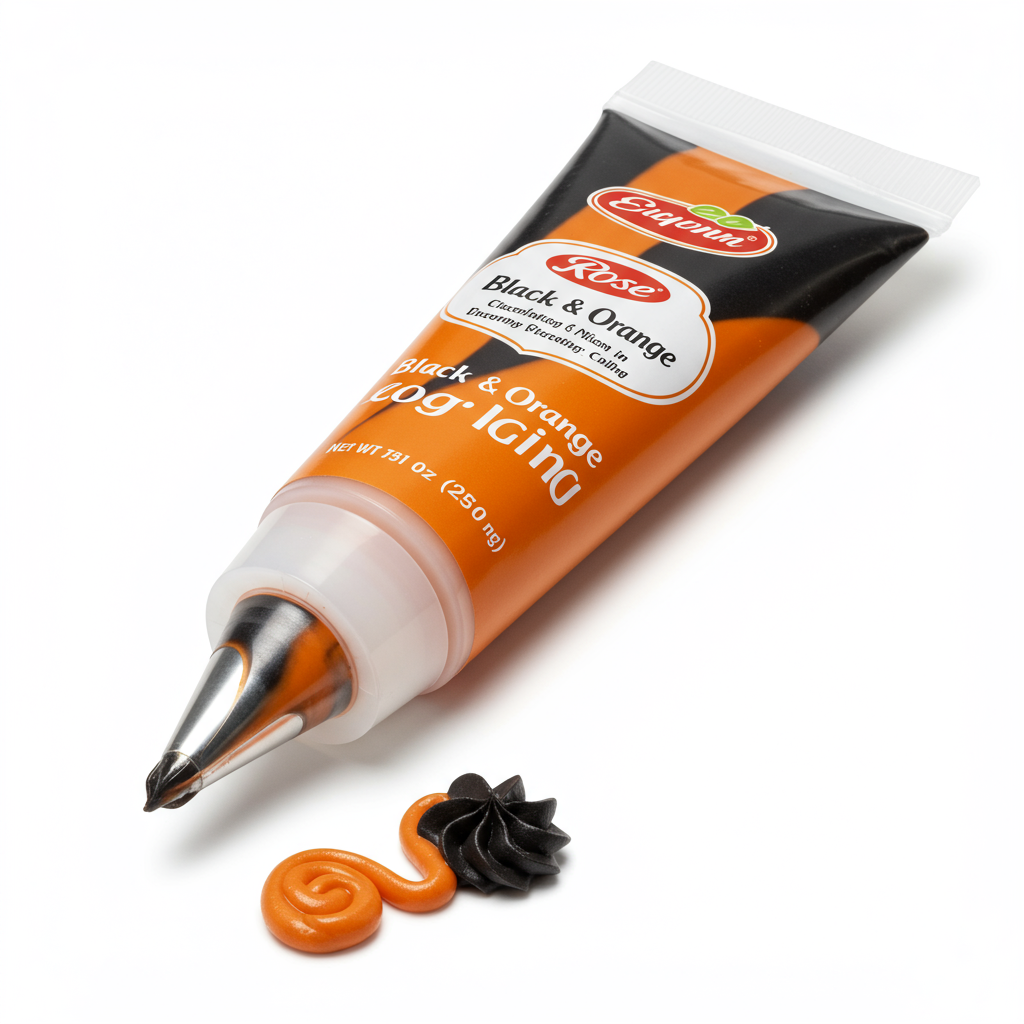
Black & Orange Decorating Icing

Black Decorating Icing

Green Sanding Sugar

Pink Sanding Sugar

Purple Sanding Sugar

Red Sanding Sugar

Sanding Sugar

Royal Icing

Edible Glitter
See All
Health Info
Macros
10g
CARBS
2g
FAT
0g
PROTEIN
Allowed on these diets
LOW FAT
HIGH CALCIUM
VEGETARIAN
VEGAN
LACTOSE FREE
GLUTEN FREE

